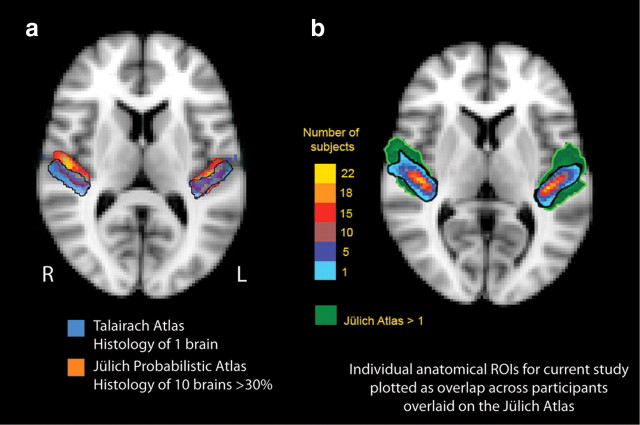Figure 2.
a, Variability of atlas-defined primary auditory cortex. Primary auditory cortex of the Talairach atlas is based on a single elderly brain (Talairach and Tournoux, 1988), shown here with the corresponding Jülich probabilistic atlas thresholded at 30% overlap across the 10 brains. Both are displayed on the MNI152 template brain (a single individual). Note that Talairach-defined primary auditory cortex is more caudal than in the Jülich atlas on the right. b, Heschl's gyrus ROIs for the current study overlaid on atlas-defined primary auditory cortex. Cytoarchitectonic borders of primary auditory cortex are well approximated by macroanatomic borders of Heschl's gyrus (Morosan et al., 2001), but Heschl's gyrus is variable across individuals. The individual ROIs for our study were drawn based on Heschl's gyrus anatomical landmarks and are shown here as overlap across all participants (color bar) coregistered into a common stereotactic space and overlaid on the standard MNI152 brain. The green underlay is the Jülich probabilistic atlas delineation of primary auditory cortex defined histologically thresholded at n = 1, which means at least one participant in the histological study of the brains of 10 participants had primary auditory cortex in a given voxel in standardized space. We chose an anatomical ROI approach for Heschl's gyrus because of the marked individual variability across participants.

